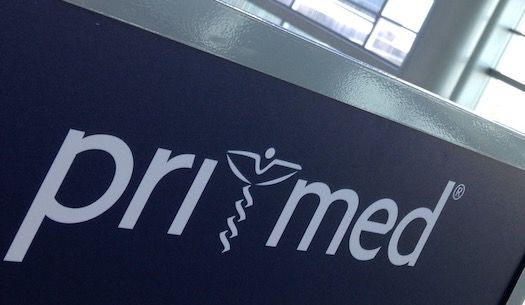To Err is Human, but Doctors Should Try to Avoid That
Panagiota Caralis, MD, lectures on strategies for avoiding medical errors.

Between 44,000 and 98,000 Americans die annually due to medical errors in hospitals, more than the number who die from auto accidents, breast cancer, or AIDS. Although medical errors as a cause of death in US have declined, they remain the third-leading cause of death in this country.
Panagiota Caralis, MD, JD, Professor of Medicine, University of Miami School of Medicine, addressed an audience of primary care physicians at PriMed West in Anaheim, CA to detail the causes and prevention of medical errors. Caralis first related that despite the high number of medical errors, that malpractice claims have been on the decline nationally since 2002, with 18.6 claims per 1000 physicians in that year, down to 9.9 claims per 1000 physicians in 2013. However, indemnity payments have been increasing to a current average of $342,384. The top four physician specialties with payments averaging over $400,000 are neurosurgery, neurology, OB/Gyn, and pediatrics, and just 1% of all physicians accounted for nearly a third of all claims in the National Practitioner Data Bank.
The category “diagnostic error” was second in terms of the number of closed claims and was number one for highest average indemnity payment. In terms of other costs, Caralis said that while disability rates are unknown, fiscal costs are known to average $2,595 and 2.2 hospital days per error.
Regarding who is at risk, Caralis said that all patients are at risk for medical error, but especially those who are older, sicker, or require more medications. However, providers are also at risk, and those who are trainees or are learning new techniques carry the highest risk.
“All doctors in all specialties make mistakes, but the most errors are seen in surgery, emergency care, intensive care, and prolonged care,” she continued. Caralis characterized medical error as “failure of a planned action to be completed as intended or the use of a wrong plan to achieve an aim.” Caralis clarified, “Not all errors are intentional acts, not all errors rise to level of medical malpractice or negligence, and not all errors result in harm to the patient.”
Spending time to differentiate between a “person” approach (blaming a specific individual or individuals) versus a system approach, Caralis said, “In a system approach, humans are assumed to be fallible and errors are expected. These errors are considered consequences, not causes, because latent factors in the environment set the person up to make a mistake, meaning that organizational processes created the conditions for error. It is important to identify the event, repair the damage, and look for the root cause, the underlying mechanism. Then the system must be redesigned to defend against a recurrence. Errors are important learning opportunities.”
Caralis used the Aviation Safety Reporting System (ASRS) as an example of a system approach. “When a harmful accident occurs, the National Transportation Safety Board NTSB investigates. Personnel involved are at legal jeopardy similar to what is seen in malpractice litigation. However, when a no-harm accident occurs, pilots, flight crew, ground crew, etc., are encouraged to report the incident to the ASRS. The process is voluntary and confidential, and staff are protected from professional consequences.”
A key component of using errors as learning opportunities is a root cause analysis. Caralis said that such analyses are characterized by systematic data gathering and analysis of the problem within an established framework that can accommodate multiple viewpoints. “Usually, there is no single root cause,” Caralis advised. Concluding her talk, Caralis encouraged the audience that while errors are common, unavoidable, devastating, non-random, and emotionally charged, that these problems have an epidemiology. “Blame hinders your understanding and ability to act. Engage your team, because these problems are treatable. Take a systematic approach and persevere!”